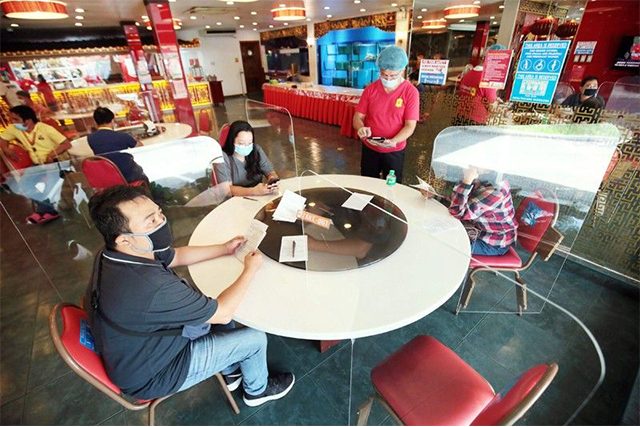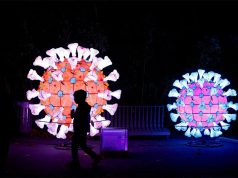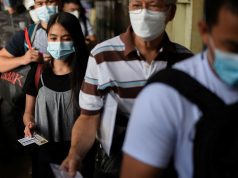
Plexiglass barriers are not effective in preventing COVID-19 transmissions, according to an authority on airborne disease transmission.
“Studies have shown that plastic barriers can actually be harmful because they block proper ventilation of that space,” Linsey Marr, also a US-based professor of environmental engineering at Virginia Tech said in a report of The New York Times.
The report discussed the opening of indoor spaces in New York.
Marr likewise quoted tweeted this and advised the public against usage of plexiglass.
Marr stressed that the material even impedes proper air ventilation, which is an important factor in preventing transmissions.
“Stop wasting money on Plexiglas! It does not help in this type of setting and may actually be harmful because it impedes proper ventilation,” she said.
Stop wasting money on plexiglass! It does not help in this type of setting and may actually be harmful because it impedes proper ventilation. See this outbreak of 20+ people in a sports bar that had distancing and plexiglass. https://t.co/lry4jWe0pE (great story, see whole🧵) https://t.co/icdAqulCVo
— Linsey Marr (@linseymarr) May 19, 2021
The professor also cited a tweet of a medical director in Boston, USA named KJ Seung who shared an infographic about how two confirmed COVID-19 cases can climb to 20 by just visiting a bar.
“Yes, many of these people had already tested positive because of symptoms. But a surprising number will not attribute those symptoms to their visit to the sports bar. A mega-cluster hiding in plain sight,” read the tweet.
And that’s how you start with 2 cases and end up with more than 20.
Yes, many of these people had already tested positive because of symptoms. But a surprising number will not attribute those symptoms to their visit to the sports bar.
A mega-cluster hiding in plain sight. 7/ pic.twitter.com/RqtU1htqWw
— KJ Seung (@kj_seung) May 13, 2021
Merriam-Webster defines plexiglass as “a transparent acrylic plastic often used in place of glass.”
Last year, Robert Anthony Siy of Pasig Transport also quote-tweeted another environmental engineering professor who does not recommend the acrylic room dividers to reduce risk of COVID-19 transmission.
“At best it does NOTHING, at worse it changes the airflow patterns in the room and can cause pooling of air, hotspots, and reduced ventilation effectiveness,” Dr. Shelly Miller said.
Follow the science on airborne transmission and you'll learn some interesting things. Such as that covering our indoor environments in plexiglass and plastic – what many places in the Philippines are doing – isn't just -not- helpful, it may be harmful.https://t.co/ESP84FsSRd
— Anton 🚰 | aka Rob | SHARE FOOD, OPEN WINDOWS (@anthony_siy) October 9, 2020
Local conversations about plexiglass also surfaced on social media after Moira dela Torre was seen in a video using a movable barrier while she performed her hit “Tagpuan” song.
Some Filipinos assumed that the barrier she used was made of the material.
In the viral clip, however, she passed along her microphone to a guest who was not wearing a face mask properly. This eventually earned her some criticisms online.
There had been studies that showed plexiglass barriers and face shields are not effective alternatives for face masks in COVID-19 prevention given that SARS-CoV-2 is now considered airborne in some settings.
In 2020, a Forbes article said that face shields and barriers cannot stop mist-like droplets from infecting another person.
“The first misconception stems from thinking that the SARS-CoV-2 coronavirus only spreads through fast, sudden actions like a cough or sneeze, which shoots liquid into the air to create ‘ballistic droplets’,” the report said.
“But droplets are also generated from fluid in the respiratory tract through less violent activity, such as simply talking or breathing. Scientists say those respiratory droplets from an infected person can hang around in the air and be inhaled by other people. The microscopic droplets create a fine mist that’s invisible to the naked eye — an airborne solution, or aerosol,” it added.
Instead of face masks and other plastic barriers, some Filipinos had proposed to improve air ventilation in indoor spaces, particularly in air-conditioned workplaces and even in transportation following evidence of the disease being transmitted through air.
A study from peer-reviewed journal The Lancet enumerated these evidence in a a study titled “Ten scientific reasons in support of airborne transmission of SARS-CoV-2.
Many industries reopened within the National Capital Region, where most of the infections are concentrated, when it shifted to the relaxed general community quarantine last May 15.









